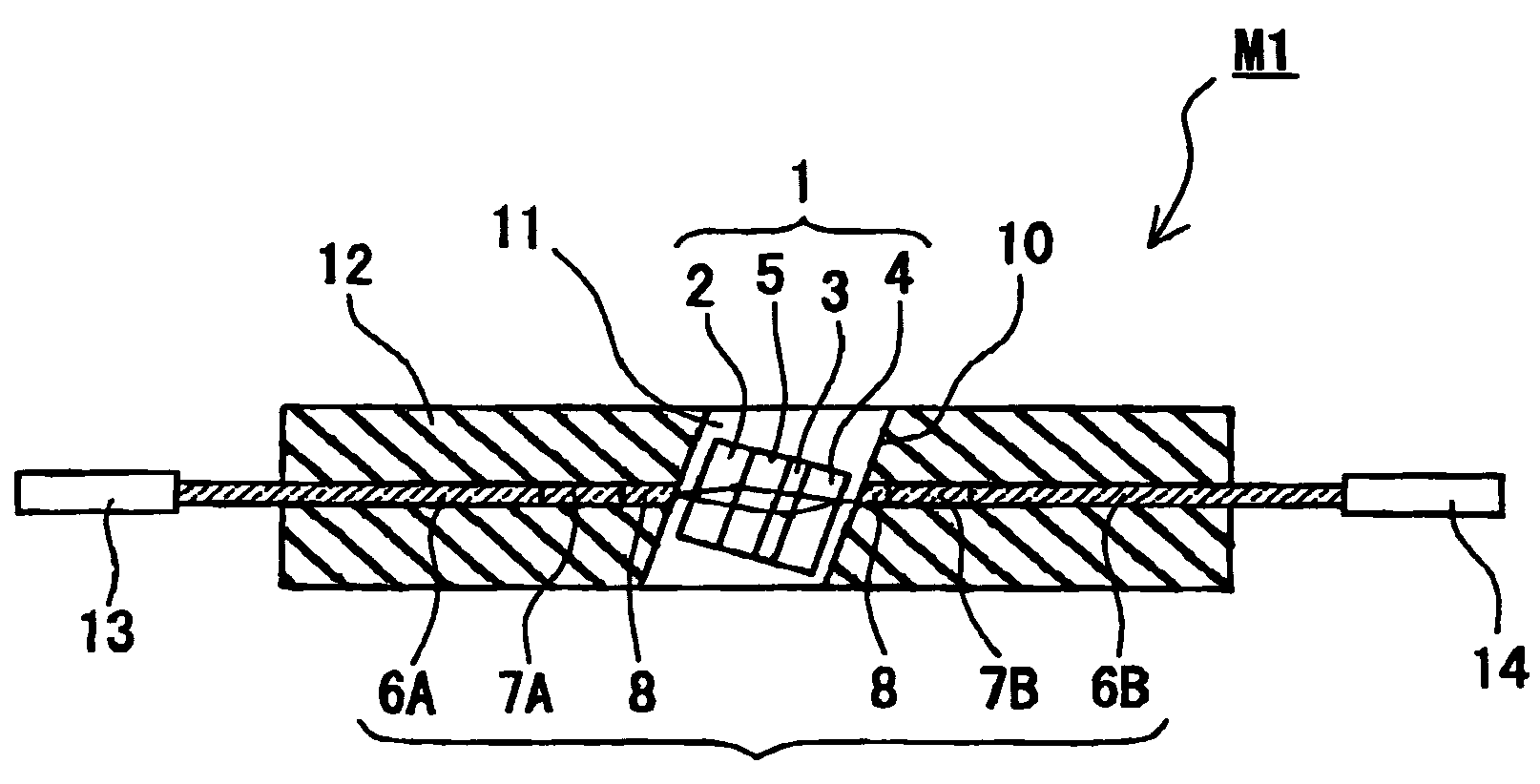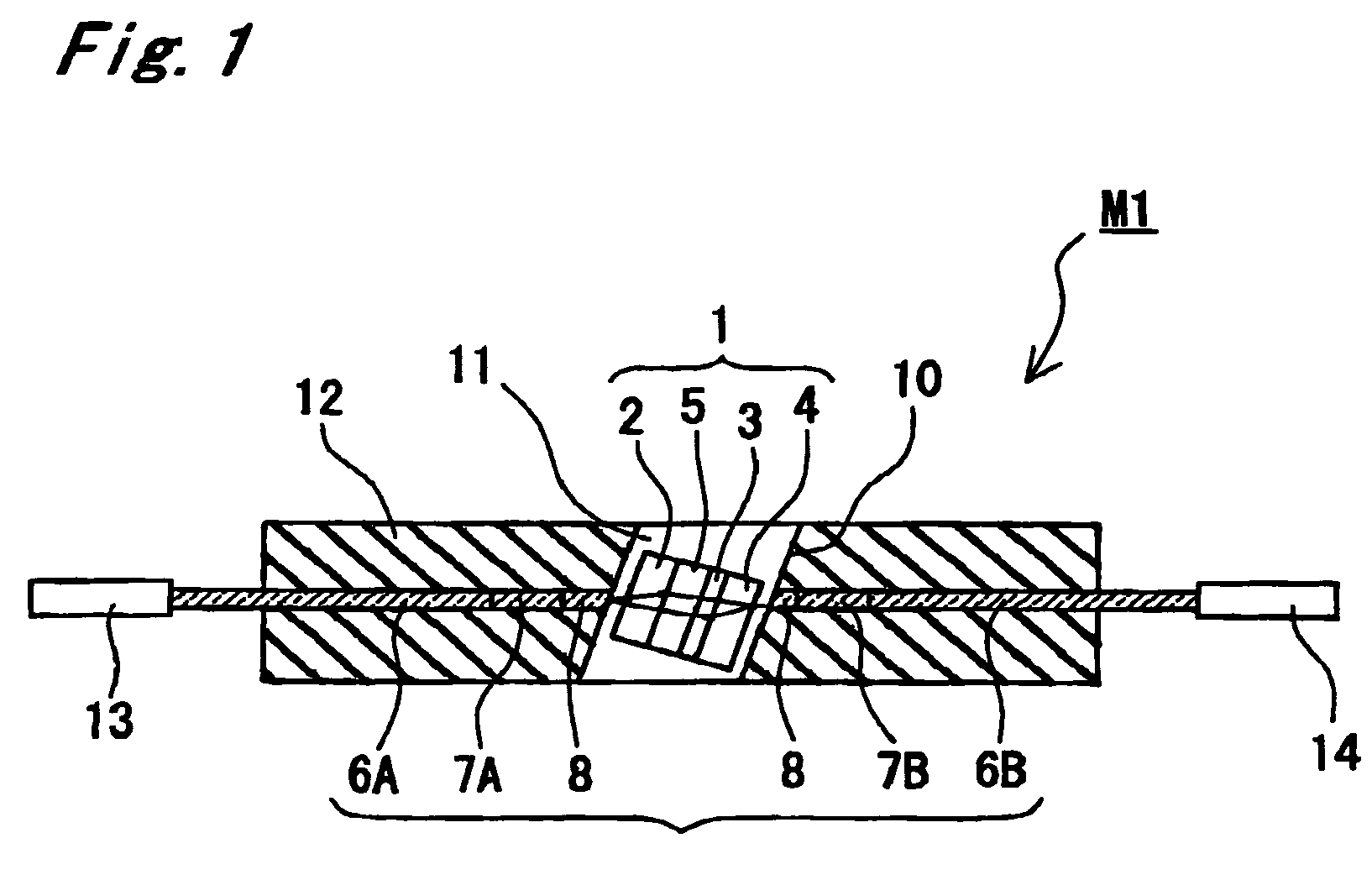Optical isolator with tilted optical isolator element
a technology of optical isolators and optical isolators, which is applied in the field of optical isolators, can solve the problems of reverse propagation loss, wavelength deviation, fluctuation in output power, etc., and achieve the effect of low insertion loss
- Summary
- Abstract
- Description
- Claims
- Application Information
AI Technical Summary
Benefits of technology
Problems solved by technology
Method used
Image
Examples
example 1
[0052]An example of the present invention will now be described with reference to FIG. 1.
[0053]The optical fiber assembly 9 was made by fusing and connecting the quartz-based single mode fiber 6A having mode field diameter of 10 μm, 0.8 mm of the graded index fiber 7A having core diameter of 105 μm and difference in the refractive index of 0.55%, 2 mm of the coreless fiber 8 made of pure quartz, 0.8 mm of the graded index fiber 7B having similar parameters as those of the graded index fiber 7A and the single mode fiber 6B successively in this order.
[0054]Then with a through hole formed in the support body 14 made of zirconia in advance, the optical fiber assembly 9 was inserted into the through hole and secured therein with an epoxy-based thermosetting adhesive 11.
[0055]The entire support body 12 together with the coreless fiber 8 portion of the optical assembly 9 was then cut off by dicing, thereby to form the groove 10 at an angle of 1 degree from the optical axis.
[0056]The first ...
PUM
 Login to View More
Login to View More Abstract
Description
Claims
Application Information
 Login to View More
Login to View More - R&D
- Intellectual Property
- Life Sciences
- Materials
- Tech Scout
- Unparalleled Data Quality
- Higher Quality Content
- 60% Fewer Hallucinations
Browse by: Latest US Patents, China's latest patents, Technical Efficacy Thesaurus, Application Domain, Technology Topic, Popular Technical Reports.
© 2025 PatSnap. All rights reserved.Legal|Privacy policy|Modern Slavery Act Transparency Statement|Sitemap|About US| Contact US: help@patsnap.com



